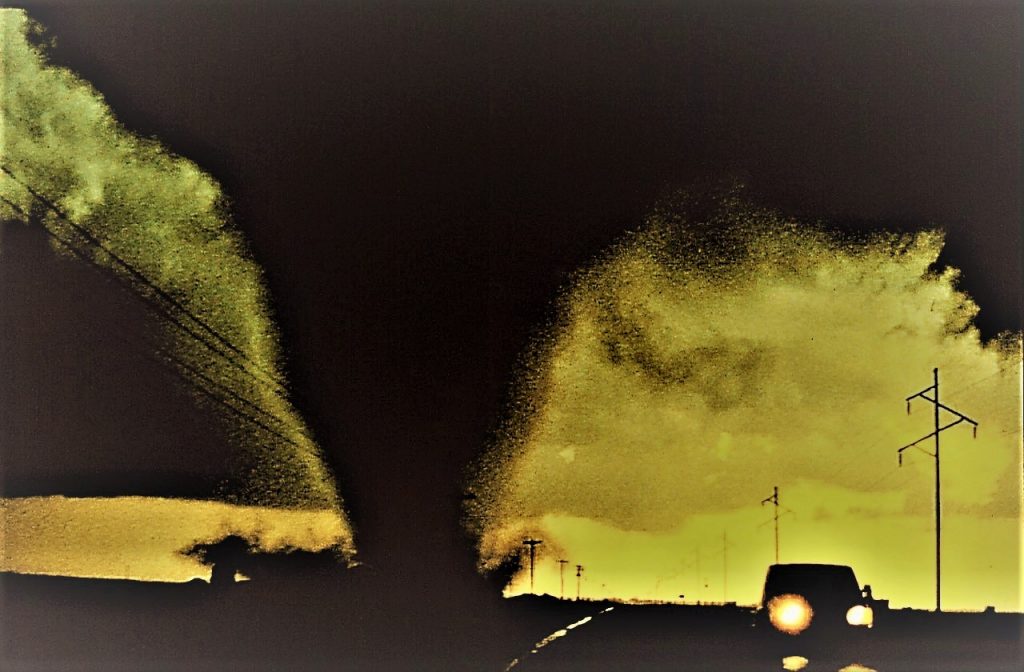Tornadoes, An American Phenomenon Posted by Gary Locke on May 31, 2019 in Culture, English Vocabulary
The United States experiences more tornados than any other country. Virtually all 50 states have reported tornado damage. With an annual average of over 1200 tornadoes, we see more than twice the number of Canada and more than four times the number in all of western Europe. More importantly, the U.S. is subject to far more intense and deadly tornadoes than any other place on our planet. Over 80 deaths and more than 1500 injuries from nationwide tornado activity are reported every year.
As of this writing, the U.S. is having an unprecedented period of tornado activity. While May is typically the month which sees the most tornadoes, this year has been extreme. The National Weather Service reported a record of 13 straight days of eight or more confirmed tornadoes each day. The previous record was 11 straight days back in 1980. There have also been over 900 separate reports of tornado sightings already this year, with over 500 coming in the last 30 days.
The problem has been a persistent weather pattern which hasn’t changed over the last few months. With high pressure stuck over the Southeast and an unusually large cold trough over the Rocky Mountains, warm and moist air moved into the central part of the country, setting off severe thunderstorms. States like Iowa, Nebraska, and Missouri have also been drenched with rain, causing catastrophic flooding.
Tornadoes, or twisters as they may colloquially be called, are generally the result of severe thunderstorms. Filled with thunder and lightning, they often contain strong winds and hail (ice). In extreme cases, a supercell is formed. This highly dangerous type of thunderstorm has a rotating updraft which scientists call a mesocyclone. They can last for hours and will produce strong winds, tornadoes, and any manner of destructive conditions.
There is an area of the U.S. commonly referred to as Tornado Alley. It ranges from northern Texas into Oklahoma, Kansas, and Nebraska, extending as far north as South Dakota. Missouri and Iowa are often included, but other states can be at high risk during peak periods. Even Pennsylvania and New Jersey, well east of historic Tornado Alley, have been hit with multiple tornadoes this month.
Tornado damage in the U.S. is measured by the Enhanced Fujita Scale. This is a more detailed version of the more universally accepted Fujita-Pearson tornado scale which classifies the destruction caused by the tornado, and estimates each storm’s wind speed. Like the original Fujita scale, it has 6 different ratings, EF0 to EF5. Any tornado which reaches the intensity of an EF2 is considered significant and dangerous. One of the largest ever recorded was a massive tornado that killed 161 people and injured more than 1100 in Joplin, Missouri, in 2011. That EF5 storm packed winds in excess of 200 mph and spread across more than 22 miles.
Here are some other vocabulary terms which you may want to know if you ever find yourself in a region experiencing severe weather.
- Anemometer – A weather instrument used to measure wind speeds.
- Barometer – A weather device used to measure air (barometric) pressure.
- Barometric pressure – Also known as air pressure, is the weight of a column of air that extends from the surface (ground or water) to the top of the atmosphere. A tornado has very low barometric pressure.
- Funnel Cloud – A rotating column of wind that hasn’t touched the ground. Funnel clouds are called tornadoes when they reach the ground.
- Landspout – A weak tornado that looks similar to a waterspout.
- Meteorologist – A scientist who studies the weather (meteorology).
- Meteorology – The science that deals with weather.
- NOAA – National Oceanic and Atmospheric Administration, which is a U.S. government organization that tracks and studies storms. They also issue advisories for storms.
- Rope Tornado – A rope-shaped tornado at the end of its lifecycle.
- Tornado outbreak – A tornado outbreak is the occurrence of multiple tornadoes spawned by the same weather system in a specific area.
- Tornado Warning – A tornado warning is issued when an actual tornado funnel has been sighted or detected by weather radar.
- Tornado Watch – A tornado watch is issued when the weather conditions in a specific area are favorable for the development of a tornado.
- Waterspout – A tornado that occurs over a body of water.
- Wind shear – A difference in wind speed or direction over a relatively short distance in the atmosphere. Wind shear causes the formation of a mesocyclone.

Build vocabulary, practice pronunciation, and more with Transparent Language Online. Available anytime, anywhere, on any device.




